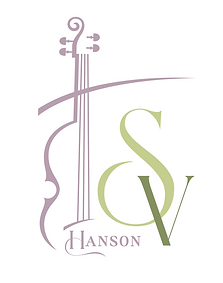Level 3 Suzuki Violin Teacher
Aimée is a Violinist from Staffordshire who started lessons at the age of 5, and further advanced her studies through the suzuki method at the age of 17 under Heather Clemson. Aimée moved to London to work under the expertise and knowledge of Kimberley Wong before setting up her own studio in Ealing. Aimée has a wealth of experience with SEN from working in specialist trauma informed and mainstream settings with children with additional needs. This informes her practice where she combines the suzuki method with her 'individual' experience to tailor her teaching to the needs of the family.
What is the Suzuki Method ?
Developed in 20th Century Japan by Dr. Suzuki, The Suzuki Method is based on the observations that a child learns to speak their mother tongue through listening, repetition, review and a positive nurturing environment. This process is applied to the learning of an instrument thus learning starts from a young age. Dr Suzuki’s central belief was that every child has the potential to develop ability when nurtured in a positive environment. The parent - child relationship is developed through the process of mutual learning. This is a unique and rewarding experience for both parent and child. Lessons are motivating and engaging involving games, songs, creative repetition, structured steps of acquiring new skills. The lesson environment is supportive, positive and fuelled with clear positive praise. The approach is concerned with developing the whole child which is enabled through the sensitivity of learning an instrument.
"Music is the language of the heart without words" - Suzuki

Suzuki Violin Lessons
Lessons are an enjoyable positive environment where the child learns new skills through creative repetition, songs and games. Lessons are targeted to the individual neeeds and development of each individual child. Parents are an important part of the lesson and are actively involved in supporting their child and keep lesson notes to aid their role in facilitating daily home practice.




_zip%20-%201_PNG.png)
